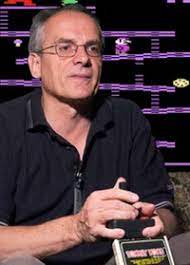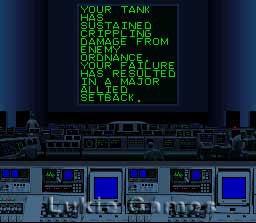An experiential and analytical look at the medium of video games in a particular order. Currently there is "Capcom A to Z," a look at the games of Capcom in alphabetical order, and "Super FamiComplete" a look at all of the games of the SNES/Super Famicom in chronological order.
Tuesday, July 5, 2022
Super FamiComplete #117: Light Fantasy
Monday, June 13, 2022
Super FamiComplete #116: Space Football: One-on-One
Wednesday, June 8, 2022
Super FamiComplete #115 Krusty's Super Fun House
Title: Krusty's Super Fun House (NA), Krusty World (JP)
Release Date: June 1992
Developer: Audiogenic Ltd.
Publisher: Acclaim
Our first Simpsons game, and boy what a weird one at that. I could have sworn that our first one would be Bart's Nightmare, but sadly not the case. This was a game that I was always vaguely aware of as a kid, but knew it more due to its Gameboy port. I knew it was a puzzle platformer, but didn't know too much beyond that. Weirdly enough, I would say this is tied for the best US developed game we have encountered thus far (that being Super Smash TV of course). Anyways, let's get to it.
Background
While I don't think this paragraph is really needed due the the cultural prevalence of the Simpsons, but perhaps there is someone who is interested in the history of the Super Nintendo or 90s culture but doesn't like cartoons in the least...The Simpsons is an animated sitcom created by Matt Groening, that started as a lampoon of 90s United States and American culture in response the the neo-conservatism and "traditional" values brought about by the Reagan/Bush Sr. era of the 1980s into the early 1990s. You had a "typical" american family of an obese lazy, alcoholic but well meaning Dad, a stay at home Mom who is overly moral, a delinquent son, the know it all daughter and a baby. You also have the characters of the town of Springfield as well each mocking a different aspect of American life.
While the show has since become a mockery of itself, at the time this game was coming out it was only around the Simpsons 3rd season, and the property was incredibly popular. This was the peak era of commercializing on the "brand" that was the Simpsons. You had Homer and Bart shilling "Butterfingers," the "Do the Bartman" single off the terrible "Simpsons Sing the Blues Album," and a whole bunch of other tchotchke merchandise. Of course, you also had video games of all shapes and sizes: from the good like the Konami Beat-em-up, the mediocre like...well this game, the bad like Bart vs the Space Mutants, and the weird like Virtual Bart or Bart's Nightmare.
This game features the eponymous Krusty the Clown, the local children's show emcee who is willing to sell his brand to the highest bidder, and puts his mug on any product regardless of quality as long as he gets paid. The story of this game leans into that: Krusty Land (a theme park that is more like a cyclopean horror house), has been overrun by rats. These rats are going to cause the park to get shut down by the health inspectors if something isn't done, so the new "Krusty Recruits" (Bart, Homer, Sideshow Mel, and Corporal Punishment) have to help exterminate the rats.
Audiogenic isn't a developer I have much background with, and it seems like they didn't do too much. They are British developer who got their start during the home console programmer era of the 1980s. Acclaim was one of the big American publishers from the 1990s that is now defunct after some pretty bad mismanagement. We will continue to bump into them throughout this blog.
Gameplay
You play as an adorable Krusty the Clown as he navigates the backstage area of Krusty Land, which is a horrifying maze of corridors, pipes, and machinery. The rats start pouring out of their holes when the stage begins, and will walk forward slowly until they hit an object that they can't mount (the rats are able mount blocks and ledges that are their own height), and will then turn around and walk in the opposite direction. They are impervious to harm, except for if they collide with the devices manned by Bart, Homer, or one of the other characters; when this happens, the rat will be smashed, zapped, or ground into powder, thoroughly exterminating them from the level. Once you have exterminated all the rats, Krusty must return to the entrance in order to end the level. Thus, the puzzle aspect of this usually revolves around moving blocks, pipes, or spring boards in order to move the rats to the extermination machines, in a similar style of puzzle to Lemmings.
Krusty himself must also contend with the perils of the level: snakes, robots, and sometimes the shoddy upkeep of Krusty Land itself will try to hurt Krusty, and he can die if he sustains enough damage. He is pretty mobile, and can pick up weapons such as pies or the fucking superball from Super Mario Land to help defend himself. Each level usually has a ton of secrets which you can explore to get more power-ups and extra lives. The game has a "high score" system as well, which is popular amongst the speedrunners of this game.
The game is split into a series of areas that don't have really a huge thematic difference, in that you will get a new song for the area and generally a different helper. The overworld is a long hallway with rooms that lead to the "stages" of the game (more rooms). Once you complete the levels in a room, Krusty will get a clearance from the health board, allowing the next section of the hallway to be accessed.
The levels do get more complex as the game continues, with difficulty usually being cranked up by adding more moving parts. Some levels will have more starting holes for rats to pour from, more blocks that must be juggled, and more hazards in the middle of critical movement areas. You can easily work yourself into a situation where you just can't win, either trapping the rats or yourself in a location with no way to exit, which is why you can actually cause Krusty to kill himself with the tap of the "give up" button (Krusty just goes "good grief" and sits down on the ground in defeat).
The music is very clown polka and not very good. Definitely grating if you are frustrated with a puzzle.
Tuesday, May 10, 2022
Super FamiComplete #114: Garry Kitchen's Super Battletank: War in the Gulf
Thursday, April 28, 2022
Super FamiComplete #113: Yokoyama Mitsuteru Sangokushi
Saturday, April 16, 2022
Super FamiComplete #112: Sougou Kakutougi Astral Bout
Super FamiComplete #125: Dinocity
Title: Dinocity (NA) Dinowars: Kyouryuu Oukoku e no Daibouken (Translation: Dinowars: Dinosaur Kingdom Paint Adventure) Release Date: 7/1...

-
Title: Hokuto no Ken 5: Tenma Ryuuseiden: Ai Zesshou (Trans. Fist of the North Star 5: Legend of the Demonic Shooting Star: A Chapter Beyo...
-
Hello all and happy 2025. Let's eat our veggies first and get the blog business out of the way. For those reading I decided to start the...
-
Hello again! Between the first post of this kind and this one, I have made some good ol' progress on a few of the titles hinted at in th...


























































